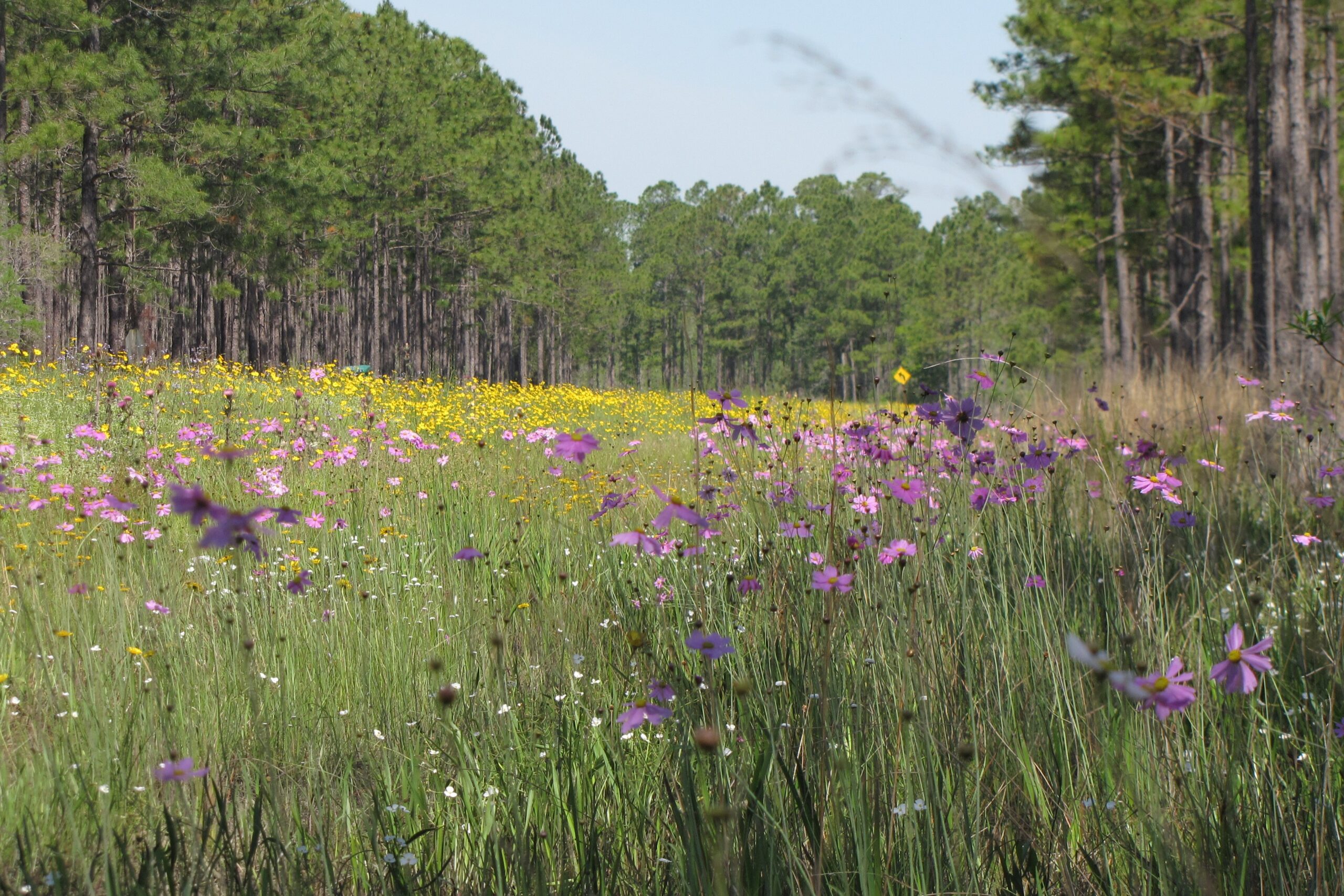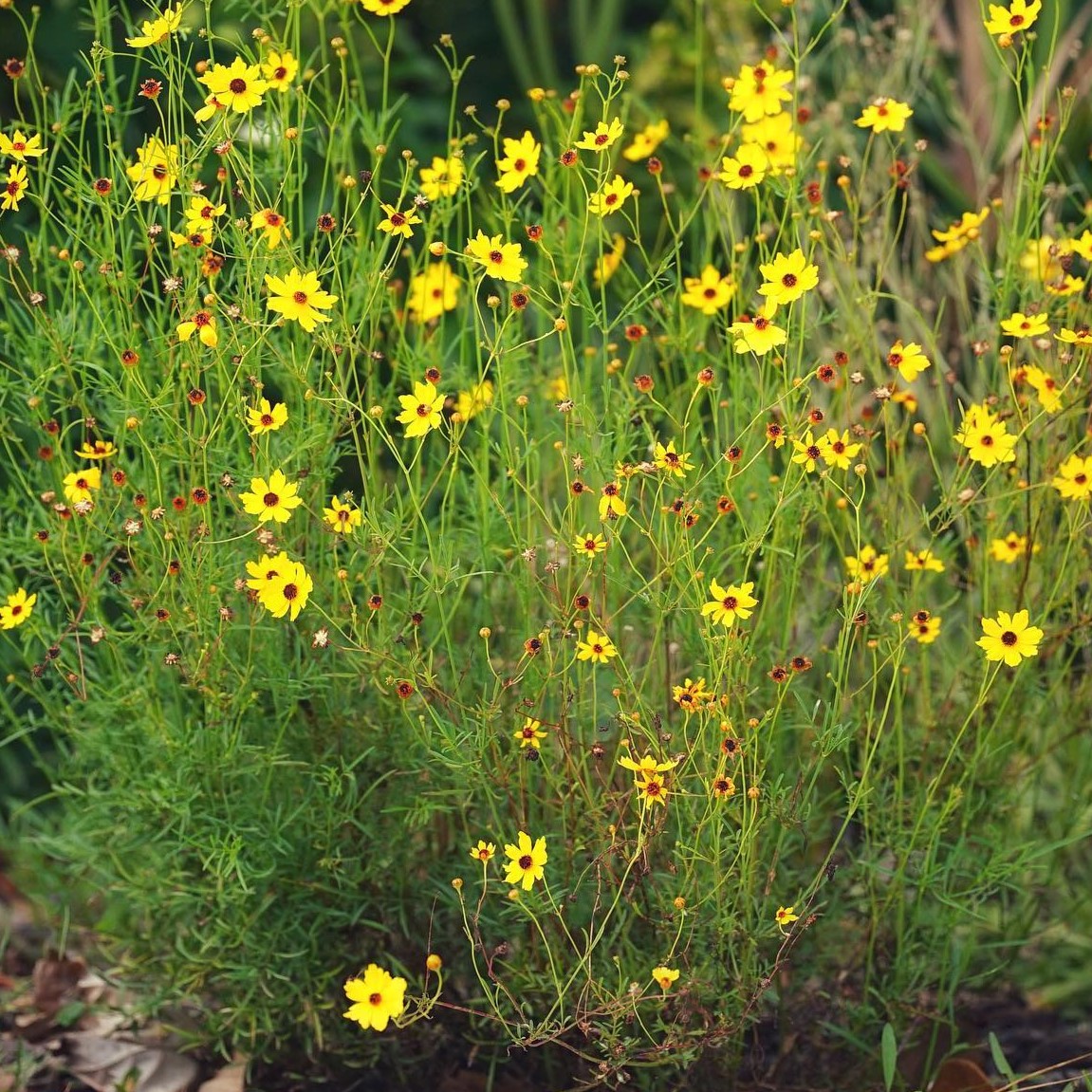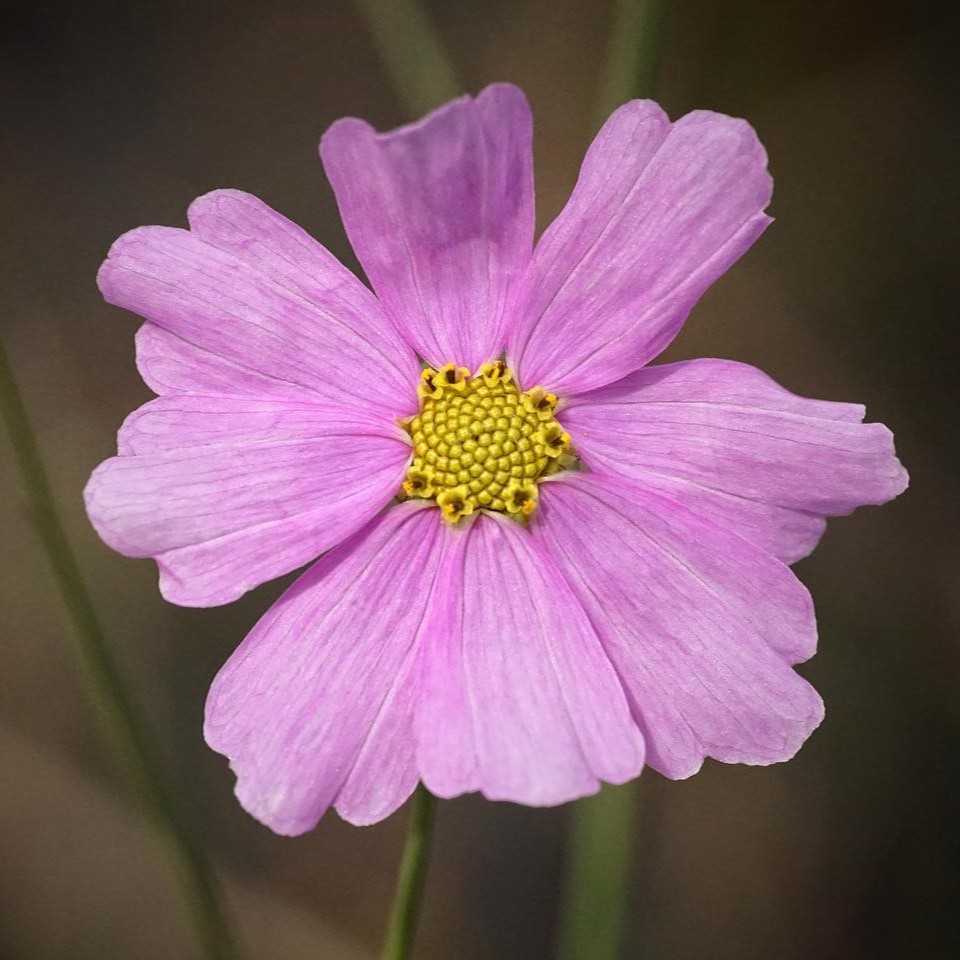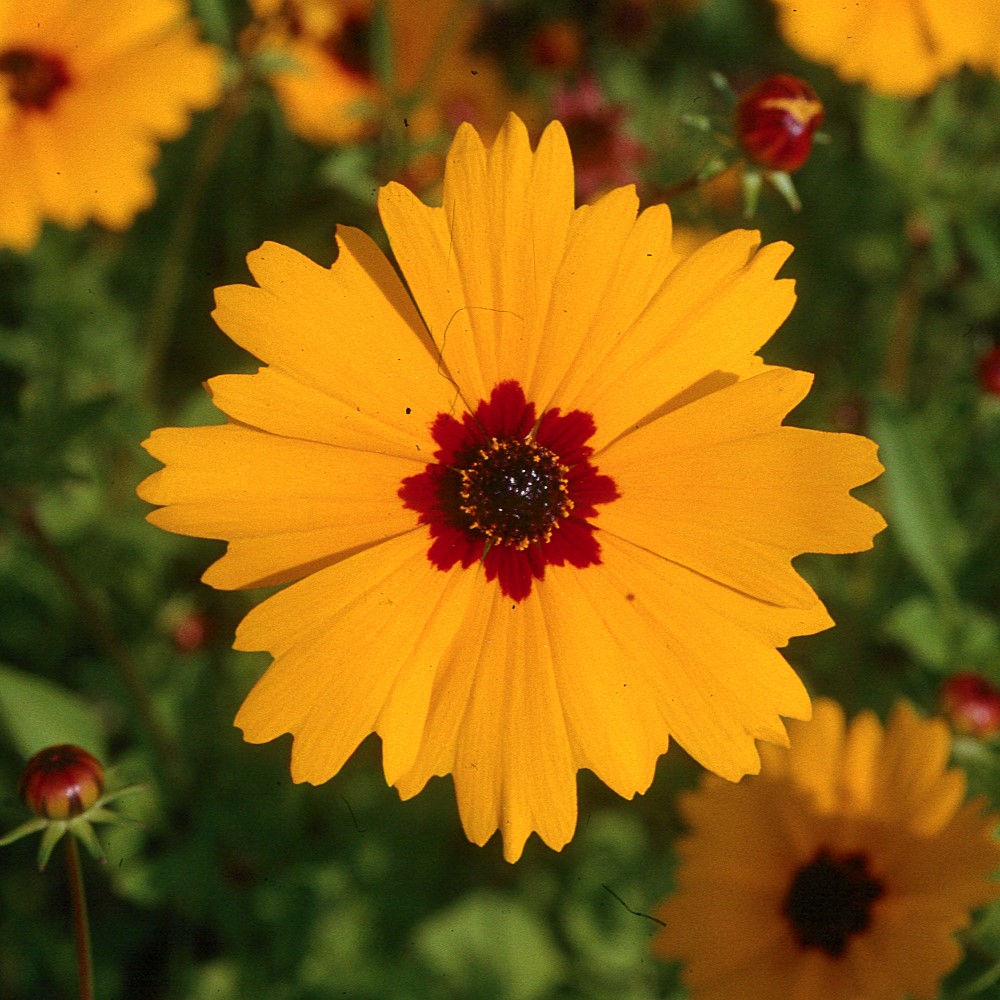Florida’s spring-flowering tickseeds
Pictured above: Swamp tickseed (Coreopsis nudata) and Lanceleaf tickseed (Corepsis lanceolata) on a roadside. Photo and article by Jeff Norcini.
In the spring, many Florida roadsides and natural areas are painted yellow with showy Coreopsis, commonly known as tickseed. Our state wildflower, the Coreopsis genus comprises more than 70 species, 15 of which have been documented in Florida. Of those, 12 are native. Five native species bloom in spring, along with one non-native. All have yellow flowers, except one.
Get to know Florida’s spring-blooming tickseeds
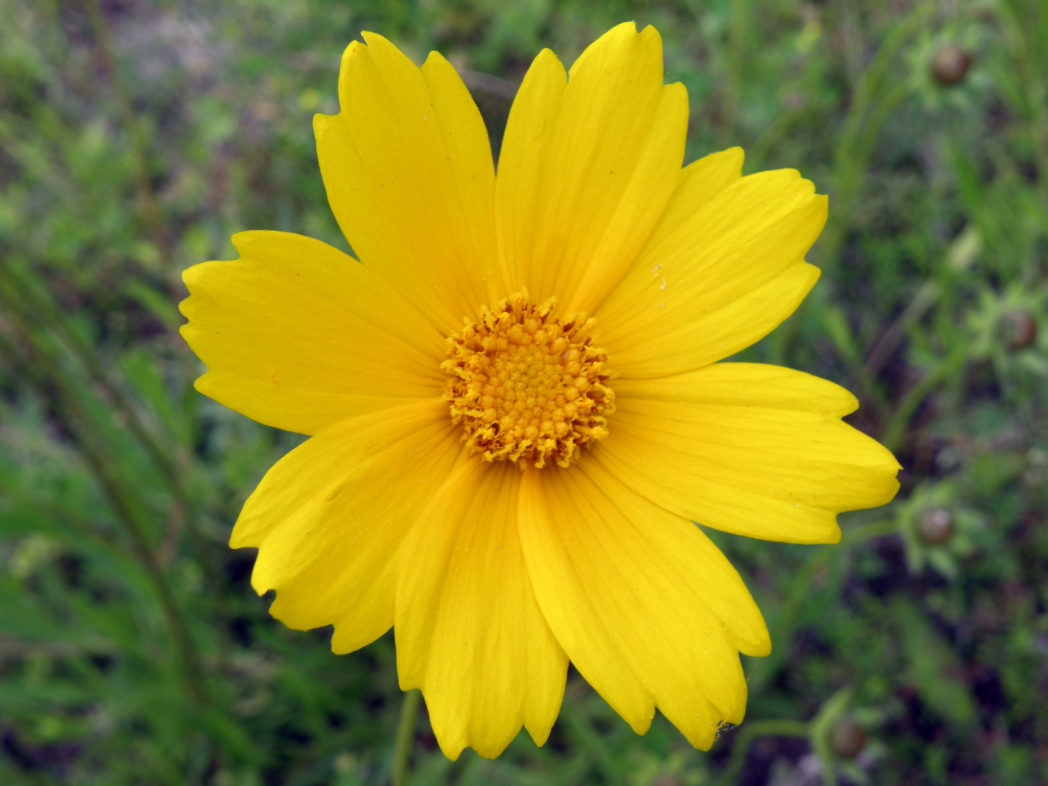
Photo by Stacey Matrazzo
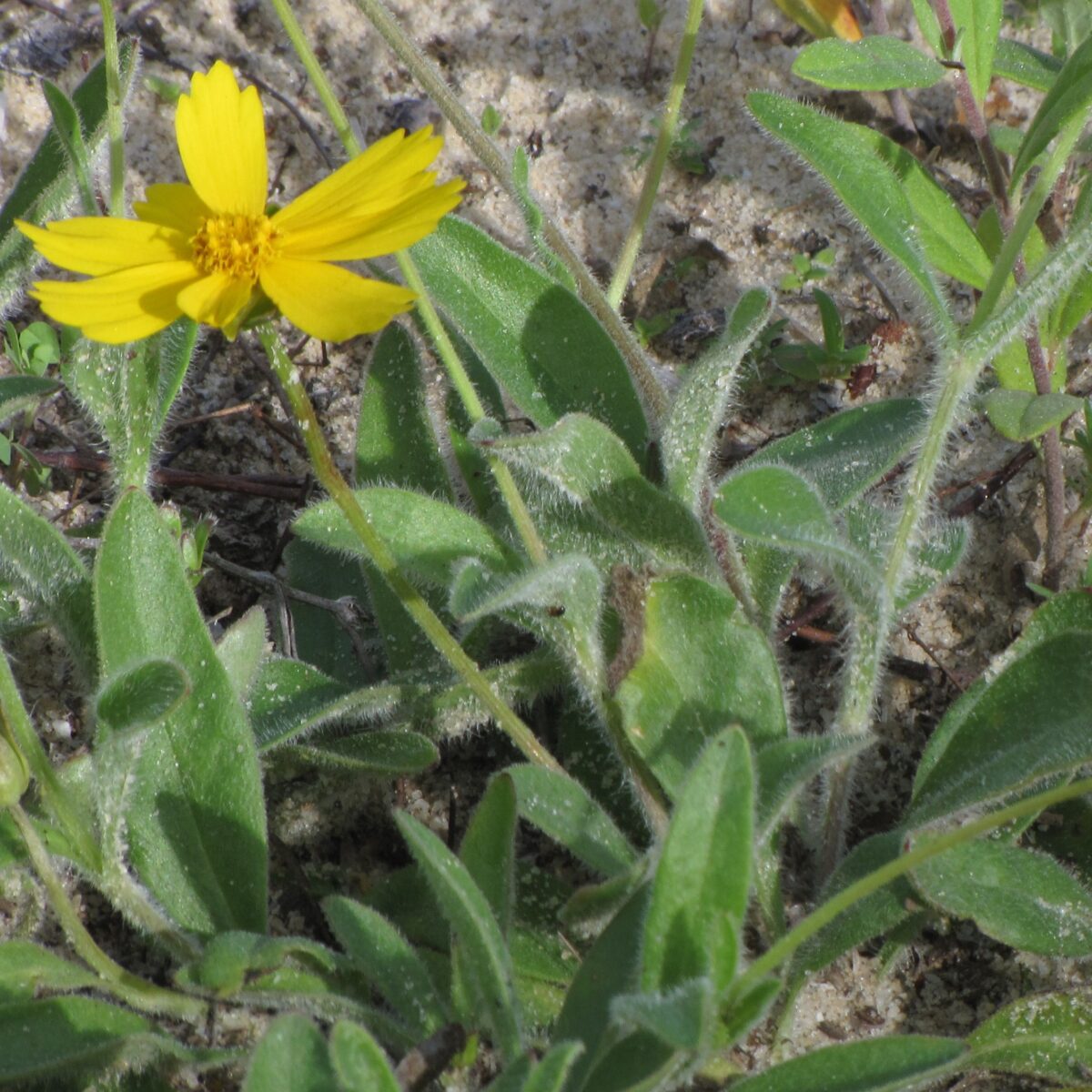
Lanceleaf tickseed (Coreopsis lanceolata)
- Naturally occurs mainly in the Panhandle and northern peninsula, but is sometimes planted in landscapes and roadsides further south
- A very hairy form occurs in the Panhandle in sandy areas
- The naturally occurring species is about 8 to 10 inches tall when blooming; cultivated forms planted in Florida often are two to three times taller, with flowers almost twice as large
- See also Native Wildflowers — Coreopsis lanceolata L.
Largeflower tickseed (Coreopsis grandiflora)
- Looks very similar to C. lanceolata and C. bakeri, requiring close examination to accurately identify
- Uncommon; found only in Liberty, Wakulla, and Lafayette counties
Baker’s tickseed (Coreopsis bakeri)
- Looks very similar to C. lanceolata and C. grandiflora, requiring close examination to accurately identify
- Rare; found only in Gulf and Jackson counties
- See also Welcome Baker’s tickseed
Leavenworth’s tickseed (Coreposis leavenworthii)
- Occurs in nearly every county
- Flowers in spring mainly in Central and South Florida
- Reaches 1 to 3 feet tall
Swamp tickseed (Coreopsis nudata)
- Florida’s only tickseed with pink flowers
- Occurs only in moist to wet areas in the Panhandle and northern peninsula
- Very tall, often 3 to 4 ft
Goldenmane tickseed (Coreopsis basalis), NON-NATIVE
- Commonly planted on roadsides by the Florida Department of Transportation
- Mainly naturalized in the panhandle and south to the northern half of central Florida; sometimes planted on roadsides further south
- Often in large in large stands along roadsides and in fields
Check out these resources to learn more about Florida’s state wildflower:

